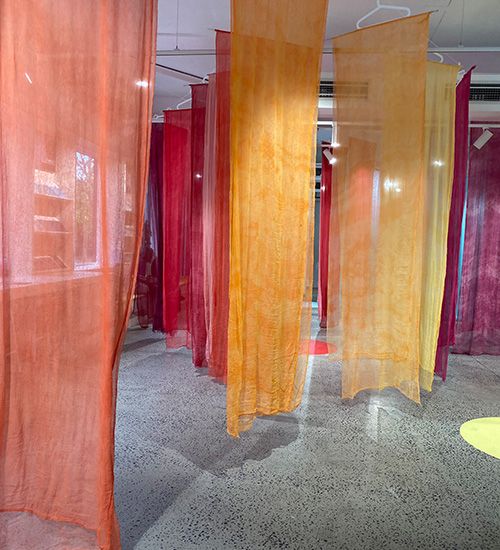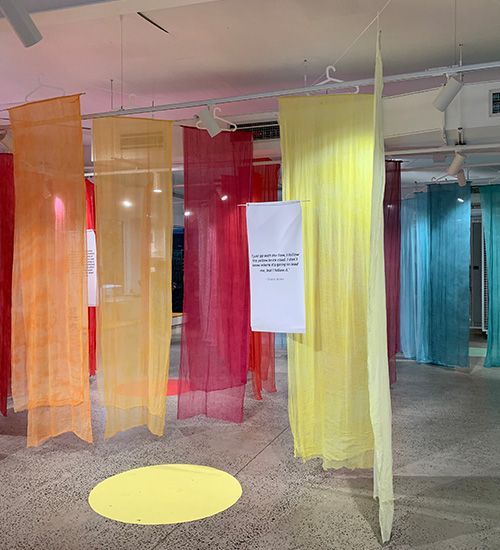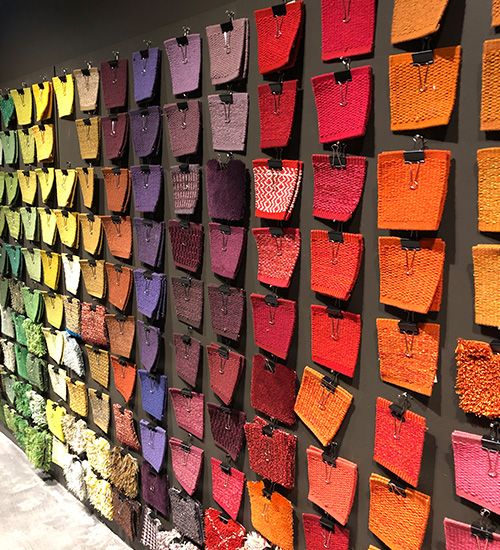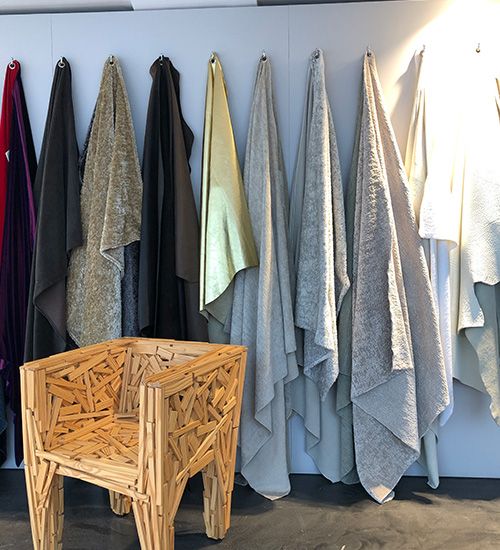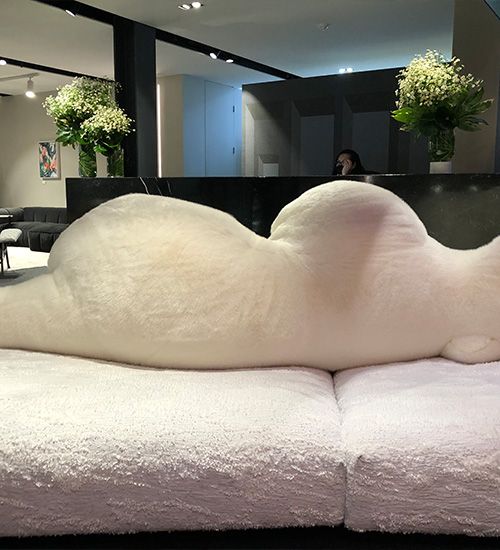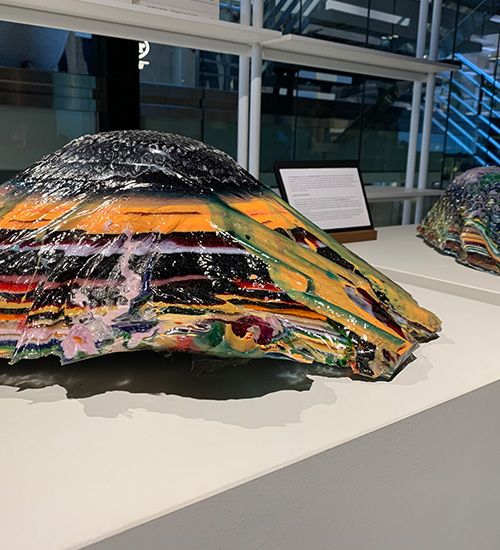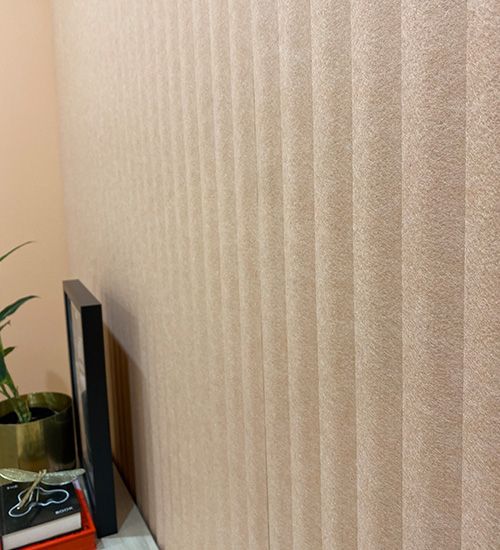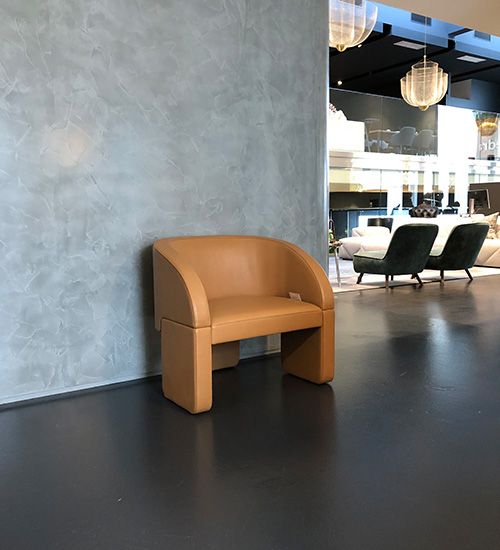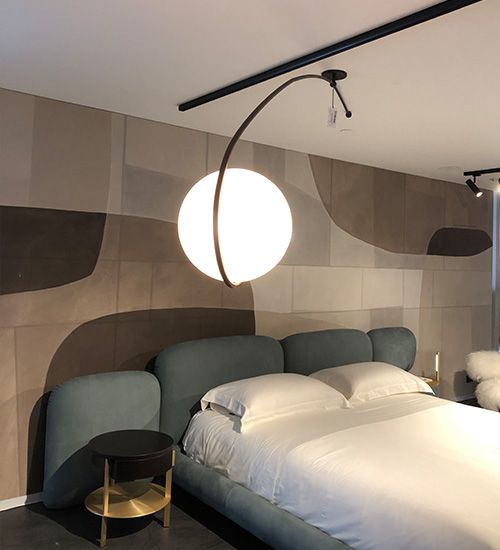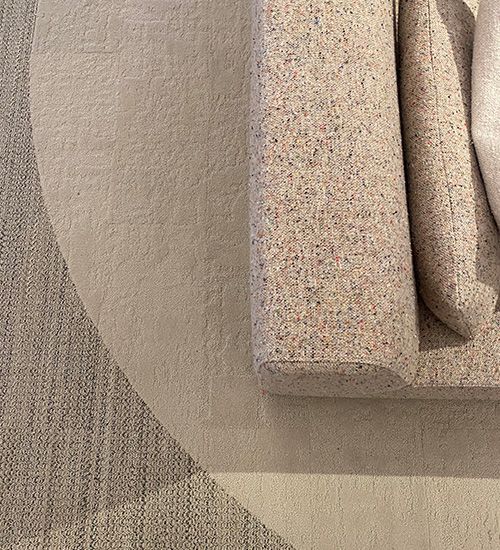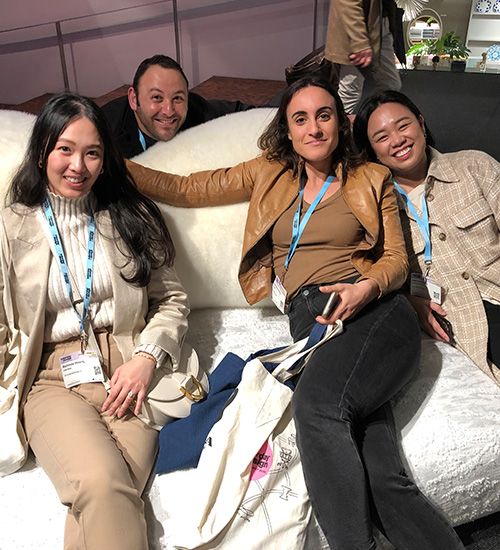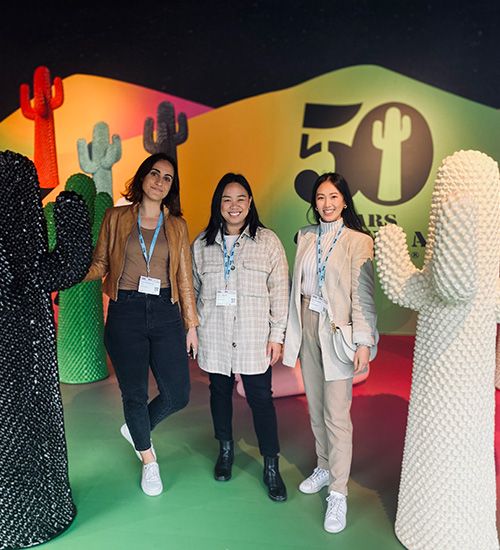Saturday Indesign is home to the best of Australia’s design scene. This year’s event in Sydney was a perfect opportunity for the city’s creative scene, including our Australian design team, to come together to enjoy a collection of workshops, installations and product launches in key design showroom locations across four design precincts.
We’ve brought together their highlights and key trends from the event that they were excited to share.
‘Dopamine dressing’
We all need a little mood boost from time to time and ‘dopamine dressing’, as it was dubbed at the event, is a great way to achieve it. The return of bright, vibrant colours to enhance our moods isn’t just big in fashion, it’s also a huge trend in interior design this season, including across the commercial space where pops of colour are being used to reinvigorate the workplace. Whether it’s through layering bright, bold hues across flooring walls and furniture, or using accessories as highlights against a more neutral background, colour is back in a big way to help boost mental wellbeing.
Porters Paint
Space Furniture
Porters Paint
Space Furniture
Restorative Design
The use of natural materials within our homes and the workplace has been growing in popularity over the last decade and even more so since the pandemic, with employees wanting to experience their workplaces as a ‘home from home’. Biophilic design elements remained a huge focus at the event, further evidence that this principle is here to stay. Natural materials and plants can have a positive effect on our wellbeing by bringing a sense of calmness and tranquility and by reminding us of our innate connection to nature. We often use nature as inspiration for our flooring designs at Interface, so it was a trend we were interested to see play out across furniture and fabrics.
We wanted to share a quote we were inspired by, which was taken from one of the discussion panels of the 20/20 Vision: Towards a Sustainable Future: “The more we listen to the values and ethos of the Aboriginal culture (we are country) the more we will reconnect with nature and thus the designs will naturally flow in line with natures energy.”
There was a real emphasis on restorative design, and the idea of reversing damage by repurposing materials and products. This is something we are excited to see more of, and aligns with our ReEntry programme at Interface, where we look to give used products with life still left in them a new lease of life, rather than discarding them.
Another quote taken from the panel discussion, which relates to this idea really struck a chord: “The take, waste model doesn’t work. We have to work with nature, and we have so much to learn from it. Doing no harm isn’t good enough, we have to be restorative.”
Space Furniture
Space Furniture
Space Furniture
Curved lines
Curves are timeless, so it was no surprise to see them featured so much within the furniture space. It was almost impossible to turn a corner without seeing curves and circular shapes on everything, from vases to furniture, to fabric and lighting.
Infinity Commercial Furniture: Wall panels offer acoustic performance, whilst also creating texture and enhancing aesthetics.
Space Furniture: We are seeing an increase in residential style furniture within the commercial space. This trend continues as we look for the familiar typologies found in our homes.
Space Furniture: Perfect curves on curves work well in residential and hospitality settings.
Living Edge: ‘World Woven’ and ‘Simple Abstraction’ Interface carpet features within the space, with complimentary textures and colours
Transparency / Iridescence trend
Something we’re passionate about at Interface is the circular economy and that everyone can play their part when it comes to sustainability and creating a climate fit for life. One of the key topics explored at the event was ‘greenwashing’ and how it’s far too easy for businesses to appear to be doing the right thing. There was therefore a strong emphasis on people and businesses doing their research to ensure they know the true story of the products and materials they purchase. It’s important to check the certifications held by a particular product and in what ways they can be repurposed or recycled.
SeehoSu, which exhibited at the event, is a great example of a business doing great things for the planet and a lot of their values align with ours at Interface. For example, all of its furniture is made from FSC timbers and it uses environmentally friendly materials such as low-VOC glues, natural paints and vegetable tanned leather.
Although some of these trends have been on the radar for a while, we’re excited to see bold colours make a comeback, as well as the increase in brands making use of natural materials and textures to improve wellbeing and reduce stress. Whenever we’re designing products at Interface, we always have the human experience and sustainability front of mind, and seeing others taking the journey with us is a further step towards a collaborative effort to support people and the planet.
